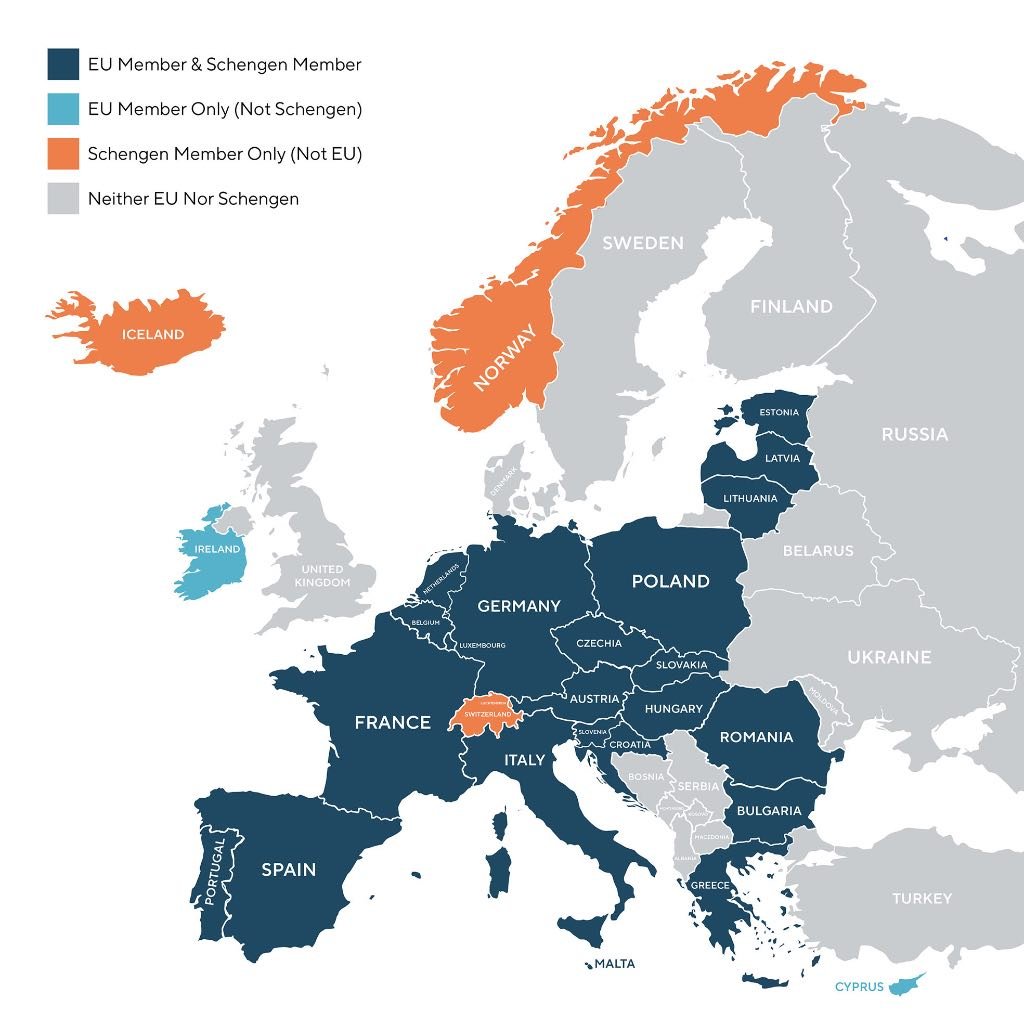Europe’s New Entry System for Non-EU Nationals: What it Means
The European Union’s new digital border control system for non-EU citizens entering and leaving the Schengen zone—the EES (Entry/Exit System)—will come into effect from Sunday 12 October. The system will be rolled out over a period of 6 months until 10 April 2026. When fully implemented it will streamline movements of non-EU travellers, monitor visa-free stays and strengthen border security.
What can we expect with the roll out? At first some confusion and a few bottlenecks at the EU entry points: airport immigration and border crossings. Seaports where travellers may be coming from countries outside the EU, such as the UK, North Africa, Turkey and the Middle East will also be affected as well as passengers on the Eurostar train service from London to France, Belgium and The Netherlands.
The processing times during the initial stages will certainly be slow as many travellers will be unprepared while border officials will have to adjust to the changes.
Under the new rules, non-EU citizens, will be required to create a digital profile when entering the Schengen zone for the first time. The process involves a photo, fingerprints and answering standard entry questions at a kiosk. Officials will be standing by to monitor and help.
Once registered, the biometric data will remain valid for three years. Subsequent visits to the Schengen zone will not require the process to be repeated, only a quick check of the fingerprint or photo taken previously.
Nostalgia
Many travellers will miss one of the their favourite things about travelling, the manual stamping of passports. The new fully electronic system will not require stamping and checking pages in your passport. If there are any discrepancies border security will intervene, but human intervention will be mostly not required.
The Schengen Area
The area or zone known as Schengen is made up of 29 countries. Among these countries travellers will be able to move freely without border checks and stay up to 90 days within any 180-day period. The new digital system will make tracking stays automatic. Anyone who overstays risks fines, detention, or entry bans across the member states.
Popular travel destinations outside the Schengen zone include the UK, Ireland, Türkiye, Serbia, Montenegro, Cyprus and several Eastern European nations, they are not covered by the EES, but entry from them will require the first time process.

The EES won’t affect me personally or my children, we are all EU citizens. The wife isn’t but she will be in future when she gets her citizenship sorted out over the next 6 months. In the meantime though she’ll experience this in November. I’ll report back then how things went, but my guess is it won’t be as bad as many predict. Perhaps our advantage is we’ll be entering through a smaller airport with much less traffic volume and of course I’ll be there with her to talk her through the process. I went through a similar process in Singapore a few years back when I was required to have a fingerprint (thumb print) and photo taken at Changi Airport’s immigration. On subsequent visits e-Gates were used. No more human interaction. Interesting that Australia does not take fingerprints at immigration or when applying or renewing a passport. Facial recognition is the only biometric data used.
In summary
- Biometric Data: Travellers will provide a passport, have their photo taken and fingerprints scanned
- Electronic Registration: The information collected is stored in a database, creating a digital record of entry and exit dates and locations.
- Replaces Passport Stamps: Traditional passport stamps will no longer be used for entry and exiting the Schengen Area.
- Duration of Stay: The EES will accurately monitor how long non-EU nationals stay in the Schengen Area.
- Progressive Rollout: The system is being phased in, with full operation expected by April 10, 2026.
Who it Applies To
- Non-EU, non-Schengen citizens travelling for short stays in the Schengen Area. This includes citizens from countries like the UK, Australia, NZ, Canada, USA and others who don’t need a visa for short visits.
What to Expect
- First Entry: You’ll need to visit a kiosk to provide your photo and fingerprints.
- Subsequent Entries: You will then only need to provide your passport and undergo a quick biometric scan (e-Gates).
- Potential for Queues: Initially, queues may form as people become accustomed to the new process.
For more information visit: https://travel-europe.europa.eu/ees or https://www.smartraveller.gov.au












1 Response
[…] my article on the new EES (Entry/Exit System) I mentioned I’d report back what we experienced entering and exiting the Schengen Area (or Zone). […]